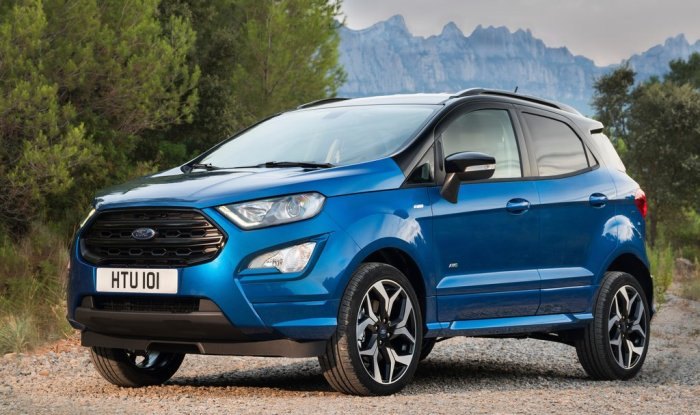Report: After Sinking Big Bucks Into a Big Market, Ford Finds Someone to Hold Half the Bag

In this case, the locale is India — birthplace of the EcoSport and a developing, massively populous market with the potential to make automakers a ton of cash. And yet Ford’s efforts to seize a slice of this pie hasn’t born the fruit the Blue Oval initially hoped. Meanwhile, Ford is in the midst of a major global streamlining effort.
What to do?
Partner up. In this case, with a major Indian automaker — Mahindra & Mahindra, builder of SUVs and ATVs, including the adorable, Jeep-like Roxor.
According to sources who spoke to Bloomberg, Ford plans to put more than half of its Indian assets into a joint venture with Mahindra. Under the deal, Mahindra would own 51 percent of the venture, with both companies having equal voting rights and representation on the board. An announcement could apparently come next week. The sources claim Ford assets not falling under the joint venture include an engine plant and the automaker’s business services division.
Speaking to the Detroit Free Press, a Ford spokesperson would only say the company is “engaged with Mahindra.” The word “engaged,” of course, could mean two things.
It seems Ford’s potential tie-up with Mahindra is going over well with analysts. Unlike Ford’s North American market, the company’s overseas operations have spent years struggling to extricate themselves from a quicksand of red ink, weighing down the automaker’s stock in the process. CEO Jim Hackett’s streamlining plan is as much about boosting investor confidence and reversing the company’s stock slide as it is about firming up the automaker’s financial footing in preparation for an economic downturn.
Autoline‘s John McElroy offered praise for the potential deal, telling Freep that the move would allow Ford to continue its attempts to penetrate the lucrative Indian market while offloading much of the financial burden. What vehicles the two entities might create, and how the duo will juggle production, remains to be seen.
Ford’s take of the Indian market sits at around 3 percent.
Reports of a looming joint venture are not shocking. Ford’s current efforts in India began back in 1995, when the automaker teamed up with, who else, Mahindra to build Escorts for the rapidly growing country. Two years ago, Ford and Mahindra announced their decision to explore a “strategic alliance,” with the main focus being mobility programs, connected vehicle projects, electrification, product development, sourcing and distribution, and global market opportunities for Mahindra.
At the time, the companies said the talks could last up to three years before both sides reached a mutually beneficial decision.
[Image: Ford]

More by Steph Willems
Latest Car Reviews
Read moreLatest Product Reviews
Read moreRecent Comments
- Dave M. I'm sorry to see any storied name go away. The lifespan of the Malibu has fit perfectly in my lifetime years-wise. Some of the highlights include the first and second generations, the '78 revamp (very clean design), and the 2005 generation. Ford, GM and Mopar gave this segment away by allowing Toyota and Honda a foot in the door and then always having to play catch-up. How hard is it to make a truly competitive sedan at a profit? Obviously, Japan Inc. figured it out.I've driven a few rentals these past years; the Malibu got the job done but honestly the Passat and Altima were my rental preferences.
- Kcflyer actually yes. It's a shame that a product this uncompetitive can still outsell GM's entire EV offerings. Those products have had billions thrown at them. Imagine how nice the new Malibu, Impala, SS, and Lacrosse would be with that kind of commitment.
- 3SpeedAutomatic Nope....
- Bd2 Looking forward to flooding the rental lots with Hyundai and Kia models, this is just one obstacle now eliminated.
- Kcflyer keep the color. lose the stupid front design. make it reliable, at least as reliable as a base 911. Then and only then is it somewhat worthy of that price.


































Comments
Join the conversation
If somehow this resulted in a true Mahindra style small truck for USDM I say its a great thing, but somehow I doubt that is the endgame. I think the endgame is even sh!ttier Ecosports for USDM and a chance for Ford to ply its other products in a new market. Supposedly with the VAG tie up Ford is going to be an EV powerhouse so maybe's its related. news.pickuptrucks.com/2010/11/global-vehicles-usa-still-hopes-to-sell-mahindra-trucks-by-spring.html
Two billion dollars down a rat hole.